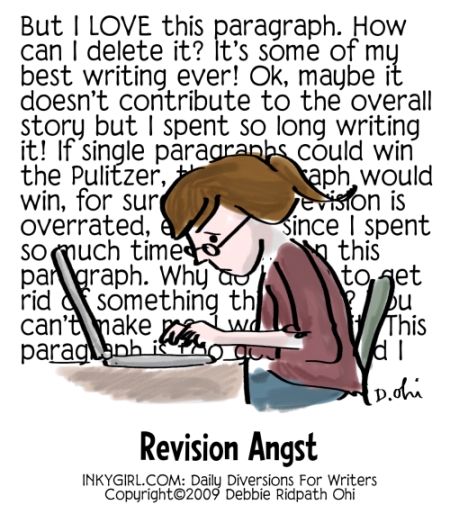Besides, just actually getting started, the revision stage is one of the toughest stages of the writing process, especially for middle grades students. Impatient, they want to be done. They'll exclaim, "Mrs. Farmer, I just wrote five paragraphs! I'm done! Yes!" I say back to them, "No, please revise!" The problem I felt though as a new teacher was that I did not equip them with great revising techniques. I am hoping that Atwell's suggestions will help me in developing my students' writing craft.
Atwell's Revision Devices:
- Carets (^) enable writers to insert new words, phrases, and lines.
- Arrows allow writers to extend writing into the empty space on the paper; in the margins
- Astericks and other codes are useful for inserting chunks, passages bigger than a caret or an arrow to accommodate.
- Spider legs are another method of adding. A writer drafts new material on strips on paper, then staples them to the original draft at appropriate points in the text.
- Cut and tape allows writers to insert new chunks of text and reorder existing sections. It saves a writer from having to recopy old material when moving to a new draft.
- Highlight- Writers can highlight sections of text in different colored inks as a way to reorganize. This is a great way for organizing ideas. Often students will jump around a lot in their writing. The highlighters can show what ideas should go together.
- Circle- Writers circle to show what they will keep in a given text. Atwell suggests this is good for beginning writers who don't want to delete anything. They can circle what they want to keep.
From reflecting on revising I also realize that as a teacher I tend to race through the essays and writings too much. We can take our time, really understanding what each stage of the writing process is all about. Hopefully, this would build a great foundation of writing instruction for my 6th graders.


No comments:
Post a Comment